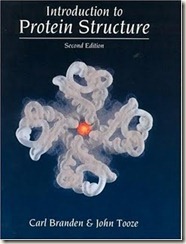Title : Fundamentals of Biochemistry
Author: J.L. Jain, Sunjay Jain, Nitin Jain
ISBN Code : 81-219-2453-7
Book Code: 04277G
Total Pages :1230
Published By: S. Chand & Company Ltd. .
Preface:
Biochemistry is a new branch of science which aims at answering, in chemical language, questions such as ‘What is the life made of ?’ and ‘How does it work ?’ Whereas the eye works at the gross level of visible objects, the microscope reaches down to the cellular level, exposing details of the various cell organelles, including nuclei and other particles. Biochemistry, however, works at a still finer level that cannot be accessed by the ultra-modern optical or phase-contrast microscopes. In other words, it operates at a molecular level and thus brings to light the hidden secrets of life. The rapid development and enormous expansion of every phase of biochemistry has not only markedly enriched our knowledge about the nature of life but has also made biochemistry the very language of life itself.
Realising the paramount importance of this discipline of science, degree courses in biochemistry are now offered in a good number of colleges and universities. But the students offering this subject at undergraduate level come as raw hand, as biochemistry is not taught to them at the school level. It is, in fact, to meet the requirements of such students that this book has been written. Besides, the book may also serve an useful purpose for higher studies.
The book contains the basic concept of biochemistry written in a manner suited to the broad spectrum of the college students. The matter has been lucidly presented, orderly arranged and profusely illustrated. References have been included at the end of each chapter in order to guide the reader to the classical and current literature. A few appendices are given at the end. These may, however, prove useful to the reader. Some illustrations have been adapted from standard texts, journals and research papers. The sources of all such figures have been duly acknowledged in their legends. The author feels greatly beholden to their authors and publishers.
At the outset, the senior author of the book welcomes his two sons, Dr. Sunjay Jain and Er. Nitin Jain who have joined me as coauthors of this text, a credit which would have been given earlier to them as they were helping in a latent way in the evolution of the book for the past many years.
Thirty two years have elapsed since one of us (JLJ) embarked on the intellectual journey of writing a textbook of Biochemistry. As Biochemistry is growing at a dazzling pace, each edition has been demanding in a different way. In this latest 6th edition, the book has been thoroughly revised, enlarged and updated with not even a single chapter left untouched. Besides, one new chapter Genetic Code has been interpolated to enhance the scope and utility of the book. Addition of two new appendices is an added charm of the book : one is ‘The Nobel Prizes’, the world’s most venerated awards and the other is an exhaustive and highly explanatory Glossary, containing about 1700 words, along with etymology of many of them. Above and over all, this time the book has been presented in multicolour edition with profuse colour illustrations so as to increase its clarity, understand ability and legibility, especially of the diagrams.
It is hoped that the present book, in its revised and enlarged multicolour form, would serve in a still better way, the authors are keenly desirous of.
Gratitude is expressed to the students and teachers, both from India and abroad, who have sent in their valuable suggestions which have been given due consideration.
Healthy criticism and suggestions for further improvement of the book are solicited.
Download links






